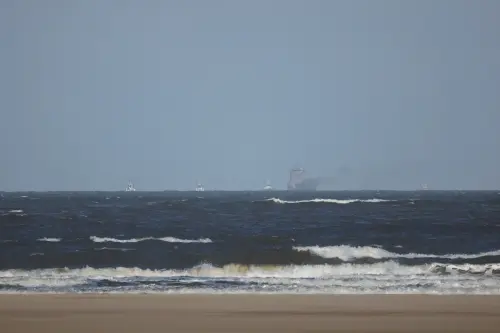In an uncommon incident off the coast of Britain, a collision involving a U.S.-flagged chemical tanker carrying jet fuel for the military and a Portuguese-flagged container vessel has resulted in both ships, the Stena Immaculate and the Solong, being engulfed in flames. Despite safety measures in place, experts in shipping and insurance expressed uncertainty about the sequence of events leading to the collision. The cause remains unclear, with speculations arising among maritime specialists regarding the peculiar circumstances of the collision, particularly questioning the speed of the Solong, which reportedly did not decelerate before impact. Authorities intend to gather further insights once they access the voyage data recorders from the vessels. Both ships were equipped with advanced navigational technologies such as radar systems, automated radar plotting aids, AIS ship tracking systems, and VHF radios. The Stena Immaculate recently underwent a safety certification survey and is scheduled for renewal in 2027, while the Solong's next safety survey is due in October. Incidents of this scale along Britain's coastline are infrequent, with historical references including the 1996 catastrophe of the Sea Empress. Despite the challenging conditions off the Humber area, known for volatile weather, stringent safety protocols are enforced. The collision, which triggered fires on both ships, has prompted immediate actions to address potential injuries, casualties, and environmental repercussions. Despite the safe rescue of both crews, one casualty from the Solong is presumed dead. The British government has initiated legal proceedings, detaining a suspect for alleged gross negligence manslaughter, and launching a criminal investigation. Experts stress the significance of established procedures to guide the investigation and underline the involvement of reputable insurers in managing the aftermath. Overall, while global oil spill data shows a decline in incidents over the years, marine accidents like this underscore the ongoing risks and the critical importance of prompt and coordinated response efforts.
World.Alpha-News.org ➤ The news of the world is here
Mysterious Ship Collision Near UK Coast Sparks Search for Clues
